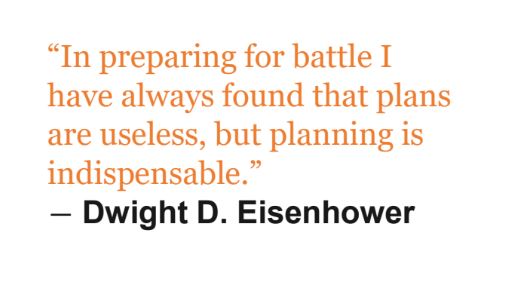The following is a guest post from our friends at Creative Economic Development Consulting.
We are always surprised when we hear professionals disparage strategic planning. While some folks may see the process as a barrier to beginning the “real work”, strong nonprofit leaders see a strategic planning process as the ultimate tool for aligning and connecting stakeholders, clarifying organizational priorities, and communicating success factors to funders and the public.
If you are a strategic planning skeptic, we invite you to consider these five features of strategic planning to see how it will add value to your organization.
Outlines the Game Plan
A go-to strategy for a new leader, the strategic plan is an ideal process for a new leader to introduce herself to the community and learn quickly the points of view and priorities of the area. Since the new leader will likely be expected to paint a vision for success over a series of years, the resulting document will illustrate the broad goals as well as specific, measurable action items to be undertaken. It is likely that the hiring process included discussions with board and community leaders about what success will look like, and so the time is ripe to match these expectations to specific attainable goals for the organization.
The basis of many strategic plans is a SWOT analysis. This is the perfect set of data for a new leader to consider the assets and resources available for the work at hand. The SWOT process will also benefit stakeholders and employees as the groups review and discuss strengths, weaknesses, opportunities, and threats.
Brings focus to the team
A strategic plan will articulate the goals and priorities for the organization and organize the actions and outcomes around the stated goals. In a high-functioning organization, this will allow employees and stakeholders to understand how they fit in the big picture and where their individual contributions are influencing the overall performance relative to a small set of goals. Discussing specific outcomes can increase role clarity on the team and even prompt a review of the roles and activities on the team. Maybe there are some things you can STOP doing as you clarify your goals and priorities. A good strategic plan will also include “stretch goals” and look several years into the future. Seeing the potential for the future can be motivating to team members.
Incorporates perspectives and contributions from a broad community
As organizations attack their daily work plans, their feedback loops and stakeholder outreach tend to stagnate. A strategic planning process necessarily reaches out to people and groups beyond the routine. This diversity can represent geographic areas or subject matter that has not had a voice in the past. These hits of reality will help the organization sync up with new patterns and resources in the community and can uncover potential partnerships and opportunities.
Collecting input and feedback from a broader group will also aid the organization by creating ownership, sharing perspectives, ultimately leading to shared goals and understanding across a wider community.
Sets goals for fundraising or grant-seeking
For private sector fundraising, requesting investments from public bodies or applying for grants, a strategic plan with evidence-based goals demonstrates comprehensive analysis and strategic thinking. Many grant programs require a multi-year plan for consideration. A request for an investment in the organization and its vision should be supported by details and a timeline on how funding will translate into the vision. In order to clearly communicate the outcomes expected from the organization, a strong strategic plan will include metrics that are updated periodically to demonstrate progress toward the stated goals. Without these goals and metrics, it is very difficult to show effectiveness to funding partners. On the other hand, a periodic dashboard of positive metrics gives stakeholders, funders and allies confidence in the purpose and direction of the organization’s activities.
Serves as the basis for communications and outreach
After the strategic plan is “in the books”, there are many opportunities for communications and messaging. In a periodic newsletter, feature one or more metrics, giving some supporting information about how this data point is tied to organizational tactics. Use the goals of the plan as an outline for an OpEd by the executive director or board chairman. The OpEd will position the organization and share the vision with a broader audience. When major milestones are achieved, use a press release to remind the community how the event, groundbreaking, or other significant point ties back to the goals and vision of the organization. The ultimate set of messages could be in the form of an annual report which will remind the reader of all of the goals and highlight accomplishments toward them over the year. This information can be used for fundraising, investor relations, board member recruitment, and orientation.
So, if you have not refreshed your strategic plan in a while, or if it is not guiding your current work plan, dust it off and put it to work for you or consider if it is time for a new strategic plan for your organization.







